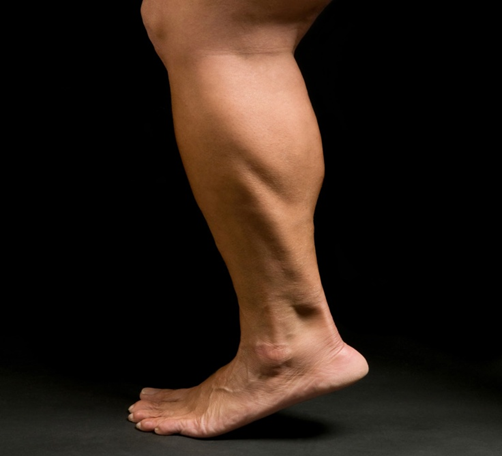Achilles
Tendinosis and Partial Tears by Richard Blake, DPM
Achilles Tendinosis implies that the tendon is damaged more than inflamed (like in Achilles Tendonitis conditions). Partial Tears are part of this condition that drives everyone, doctor and patient, bananas. There are so many degrees of tendon disease. MRIs, if possible, should always be done to document what is going on. The important physical finding to suspect an achilles injury, more than tendonitis, is the presence of visible swelling. Straight Forward Achilles strains or tendonitis conditions should not have visible swelling.
The top 10 treatments for achilles
tendinosis and partial tears are:
1.
When the tendon is thicker than normal, or swelling that will not
go away, consider an MRI to check if a partial tear is present.
2.
With tendinosis, some form of immobilization is important to
create a pain free environment.
3.
With a partial tear of the achilles tendon, 3 months of cam
walker/removable boot is crucial (when a pain free situation cannot be obtained
with activity modification).
4.
With tendinosis, physical therapy can occur at the same time
as the immobilization, and with a partial tear, physical therapy normally
starts after the 3 months of immobilization.
5.
Both of these conditions may require surgery, so a
surgical consult should be done to evaluate options.
6.
As the tendon gets less sore with icing for 10 minutes 3
times per day, gradually begin to strengthen. I love 2 positional Heel raises
up to 100 each evening as long as there is no pain, gradually leaning to the
injured side, and gradually progressing to 25 one sided heel raises.
7.
Achilles tendon stretching, both straight and bent knee, should be
done painlessly 3-5 times a day.
8. PRP
injections and Shockwave Therapies are rising stars to hopefully avoid surgery may be considered. At the time of this writing, Stem Cell injections are still not proven to the author.
9.
Like
all cases of achilles pain, heel lifts and custom orthotic devices are
standard to both stabilize the heel and decrease the stress on the achilles at push off. The solid platform of a standard custom made functional foot orthotic device gives incredible power to the achilles by centering the heel under the leg, anchoring the heel, and easing the stress at heel lift on the achilles.
10.
Avoid barefoot and negative heel positions for
a year following the Return to Activity Phase.
When the heel
drops below the plane of the ball of the foot, it is considered in a negative
heel position, and the achilles can get over stretched and re-torn. In the initial phases of achilles rehabilitation, I prefer to keep my patients in their seats while biking.


No comments:
Post a Comment
Thank you very much for leaving a comment. Due to my time restraints, some comments may not be answered.I will answer questions that I feel will help the community as a whole.. I can only answer medical questions in a general form. No specific answers can be given. Please consult a podiatrist, therapist, orthopedist, or sports medicine physician in your area for specific questions.